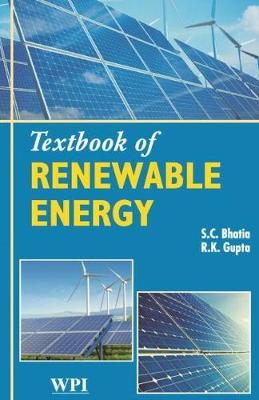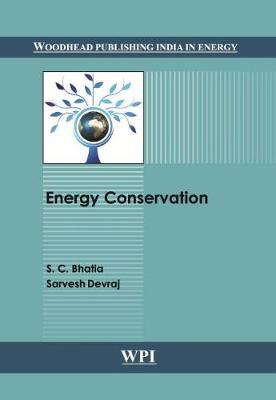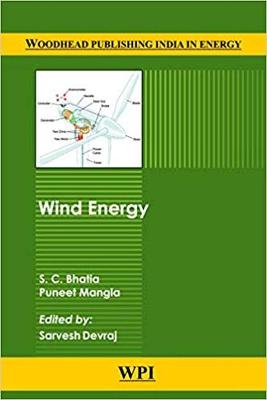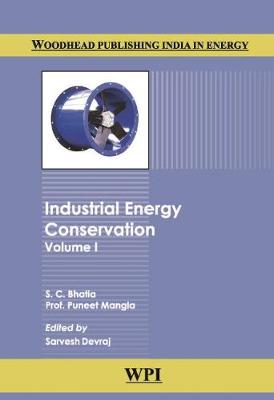Woodhead Publishing India in Energy
5 total works
Industry contributes various kinds of pollutants to the environment and different countries are facing different types of industrial pollution problems that are attracting a lot of attention worldwide. The industry sector generates both traditional pollutants (e.g., organic substances, sulphur dioxide, particulates and nutrients) as well as newly-recognised pollutants (e.g., specific toxic substances). Thus, industry has particular environmental responsibility in terms of such factors as plant location and design, environmental pollution, vibration and noise controls, waste disposal, occupational health and safety aspects, and long-range planning.
This two-volume book summarises various aspects of pollution prevention and waste minimisation aspects in various industries. It discusses emissions from particulate matter and its control, industrial wastewater and its treatment, common effluent treatment plant, industrial biotechnology and climate change, pollution control in mechanical, electrical, metallurgical and mining industry, pollution control in cement, ceramic and glass industry, pollution control in chemical process and allied industries, pollution control in sugar, pulp and paper, rubber and plastic industries.
A unique features of the book is chapters on process integration for pollution prevention and energy saving and nanotechnology for industrial pollution prevention.
This two-volume book summarises various aspects of pollution prevention and waste minimisation aspects in various industries. It discusses emissions from particulate matter and its control, industrial wastewater and its treatment, common effluent treatment plant, industrial biotechnology and climate change, pollution control in mechanical, electrical, metallurgical and mining industry, pollution control in cement, ceramic and glass industry, pollution control in chemical process and allied industries, pollution control in sugar, pulp and paper, rubber and plastic industries.
A unique features of the book is chapters on process integration for pollution prevention and energy saving and nanotechnology for industrial pollution prevention.
Renewable energies are sources of clean, inexhaustible and increasingly competitive energy. They differ from fossil fuels principally in their diversity, abundance and potential for use anywhere on the planet, but above all in that they produce neither greenhouse gases - which cause climate change - nor polluting emissions. There are many forms of renewable energy. Most of these renewable energies depend in one way or another on sunlight. Wind and hydroelectric power are the direct result of differential heating of the Earth's surface which leads to air moving about (wind) and precipitation forming as the air is lifted. Solar energy is the direct conversion of sunlight using panels or collectors. Biomass energy is stored sunlight contained in plants. Other renewable energies that do not depend on sunlight are geothermal energy, which is a result of radioactive decay in the crust combined with the original heat of accreting the Earth, and tidal energy, which is a conversion of gravitational energy.
Textbook of Renewable Energy summarises various aspects of renewable energy and is divided into 16 chapters. Discussed are renewable energy sources, solar radiation and its measurement, solar thermal energy conversion system, solar photovoltaic systems, biogas, biomass, biofuels, wind energy, fuel cells, tidal energy, hydrogen energy, geothermal energy, ocean thermal energy conversion, renewable energy applications in developing smart cities, environmental aspects of electrical energy generation. A unique feature of the book is chapter on magneto hydro dynamic power generation.
Textbook of Renewable Energy summarises various aspects of renewable energy and is divided into 16 chapters. Discussed are renewable energy sources, solar radiation and its measurement, solar thermal energy conversion system, solar photovoltaic systems, biogas, biomass, biofuels, wind energy, fuel cells, tidal energy, hydrogen energy, geothermal energy, ocean thermal energy conversion, renewable energy applications in developing smart cities, environmental aspects of electrical energy generation. A unique feature of the book is chapter on magneto hydro dynamic power generation.
Energy conservation filles the gap between supply and demand. Several measures for conservation of energy are very important for consideration. The energy audit can unearth huge profits to the industry. Saving of usable energy, which is otherwise wasted, has direct impact on economy, environment and long term availability of non-renewable energy resources. Energy conservation implies reduction in energy consumption by reducing losses and wastage by employing energy efficient means of generation and utilisation of energy. Opportunities to improve industrial energy efficiency are found throughout the industrial sector. Improved energy system efficiency can also contribute to a company's bottom line by increased production through better utilisation of equipment assets, greater reliability and reduced maintenance costs.
This book summarises various aspects of energy consumption and conservation, and is divided into 21 chapters. It discusses: energy conservation in various industries such as food industry, chemical industry (petroleum refinery, fertiliser, pulp and paper), textile industry, cement, ceramic and glass industry, iron and steel industry and various equipment like boilers, motors, fans, compressors, etc. This book is a complete treatise on energy conservation and also includes a chapter on energy conservation in thermal power plants.
It will be invaluable for professionals, industrialists and consultants in the respective fields.
This book summarises various aspects of energy consumption and conservation, and is divided into 21 chapters. It discusses: energy conservation in various industries such as food industry, chemical industry (petroleum refinery, fertiliser, pulp and paper), textile industry, cement, ceramic and glass industry, iron and steel industry and various equipment like boilers, motors, fans, compressors, etc. This book is a complete treatise on energy conservation and also includes a chapter on energy conservation in thermal power plants.
It will be invaluable for professionals, industrialists and consultants in the respective fields.
Discusses the global status of wind energy, wind turbine technology, planning wind projects, wind resource assessment, off shore wind energy, major failures in wind turbines, role of lubricants in wind energy, wind energy based desalination processes and plants, environmental and ecological aspects of wind energy, carbon footprint of wind energy, barriers to wind energy, economics of wind energy.
A unique features of the book is chapters on improving wind turbine performance using nanomaterials and wind energy to power agriculture.
A unique features of the book is chapters on improving wind turbine performance using nanomaterials and wind energy to power agriculture.
Industrial energy conservation contributes to solution of the global issues such as energy security and possible future exhaustion of oil. Industrial energy efficiency is a key ingredient in any national energy efficiency programme. Energy is one of the most important building block in human development, and, as such, acts as a key factor in determining the economic development of all countries. There is, therefore, an urgent need to conserve energy and reduce energy requirements by demand-side management and by adopting more efficient technologies in all sectors. In fact, energy is one of the pillars that support the entire superstructure of the modern civilization.
This two-volume set summarizes various aspects of industrial energy consumption and conservation and is divided in two volumes. It discusses: energy efficiency technologies related to boiler, steam distribution and waste heat recovery, energy conservation in chemical process and allied industries, petroleum refineries and petrochemicals, plastic and rubber, tannery, textile, electrical, mechanical, cement, ceramic and glass, metallurgical and mining industries. A unique feature of the book is the chapter on nanotechnology in energy conservation.
This two-volume set summarizes various aspects of industrial energy consumption and conservation and is divided in two volumes. It discusses: energy efficiency technologies related to boiler, steam distribution and waste heat recovery, energy conservation in chemical process and allied industries, petroleum refineries and petrochemicals, plastic and rubber, tannery, textile, electrical, mechanical, cement, ceramic and glass, metallurgical and mining industries. A unique feature of the book is the chapter on nanotechnology in energy conservation.




